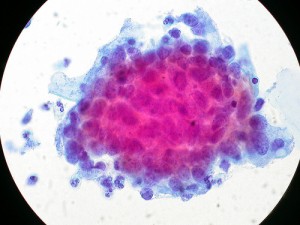Latinas Have A Higher Incidence Of Cervical Cancer
 Cervical cancer is preventable.
Cervical cancer is preventable.
This is true even though more young women die of cervical cancer than anything else in the U.S. — it’s the second leading cause of death of young women only behind accidental death. And the picture is even darker for Latinas. According to the American Cancer Society, there are approximately 10,000 cases and 3,700 deaths from cervical cancer in the U.S. each year.
But because of low rates of routine gynecological care, particularly Pap smears and cervical cancer screening, Latinas have twice the incidence of cervical cancer than non-Latinas. Low screening rates are the result of lack of health insurance, fear associated by immigration status, lack of knowledge or limited English proficiency.
The tragedy is cervical cancer is very preventable. 85% of women who die from cervical cancer never had a Pap smear, which detects precancerous changes in the cervix before they become deadly. Plus, there is a revolutionary vaccine that prevents cervical cancer! Unfortunately, it is largely under-utilized.
There’s a shot that prevents cervical cancer!
In June 2006, the FDA approved the first vaccine developed to prevent cervical cancer caused by four strains of the human Papilloma virus (HPV); two of which are responsible for 70% of cervical cancer incidences and two strains which are responsible for 90% of genital warts caused by HPV.
The HPV vaccine is approved by the FDA for girls and women ages 9 to 26. It is given as a series of three shots over the course of six months and should be administered whether or not you are sexually active. Unfortunately, either because of costs or fear of vaccinations (there is a movement against this particular vaccine, and vaccines in general), the HPV vaccine is under-utilized with less than half of eligible women getting the first shot of the three shot regimen.
Cervical cancer can be prevented by screening.
There are two screening tests for cervical cancer: the Pap test and the HPV test:
BULLET THESE PLS
*The Pap test (or Pap smear) is the main test for cervical cancer and is highly reliable and effective. Talk with your health care provider about how often you should be screened for cervical cancer. It is recommended that every woman begins Pap test screening at age 21 and is screened every two years through age 29. After age 30, if you have had three normal Pap tests in a row, your health care provider may recommend you be screened once every three years. If your Pap test results show cells that are not normal and may become cancer, your health care provider will contact you for follow-up. There are many reasons why Pap test results might not be normal. It usually does not mean you have cancer.
*The HPV test may be used for screening those aged 30 and over, or for women of any age with abnormal or unclear Pap test results. The test looks for the high-risk types of HPV that cause most cases of cervical cancer. A positive result for high-risk HPV means that you should be followed closely to make sure that abnormal cells do not develop.
In this day and age women should not be dying from cervical cancer. There’s a vaccine to prevent the cancer. If the vaccine is too expensive, there are excellent, inexpensive screening tests to detect precancerous cells before they become cancer. Be sure you and your loved ones do what’s necessary to prevent cervical cancer.
References:
http://latinainstitute.org/
http://latinainstitute.org/
http://latinainstitute.org/
http://www.health.ny.gov/

